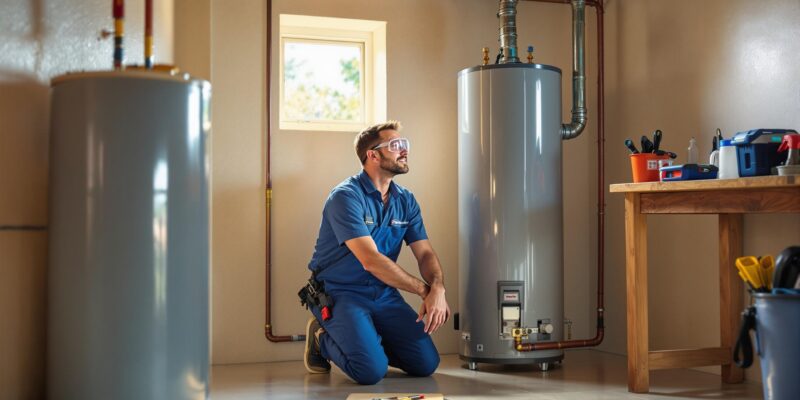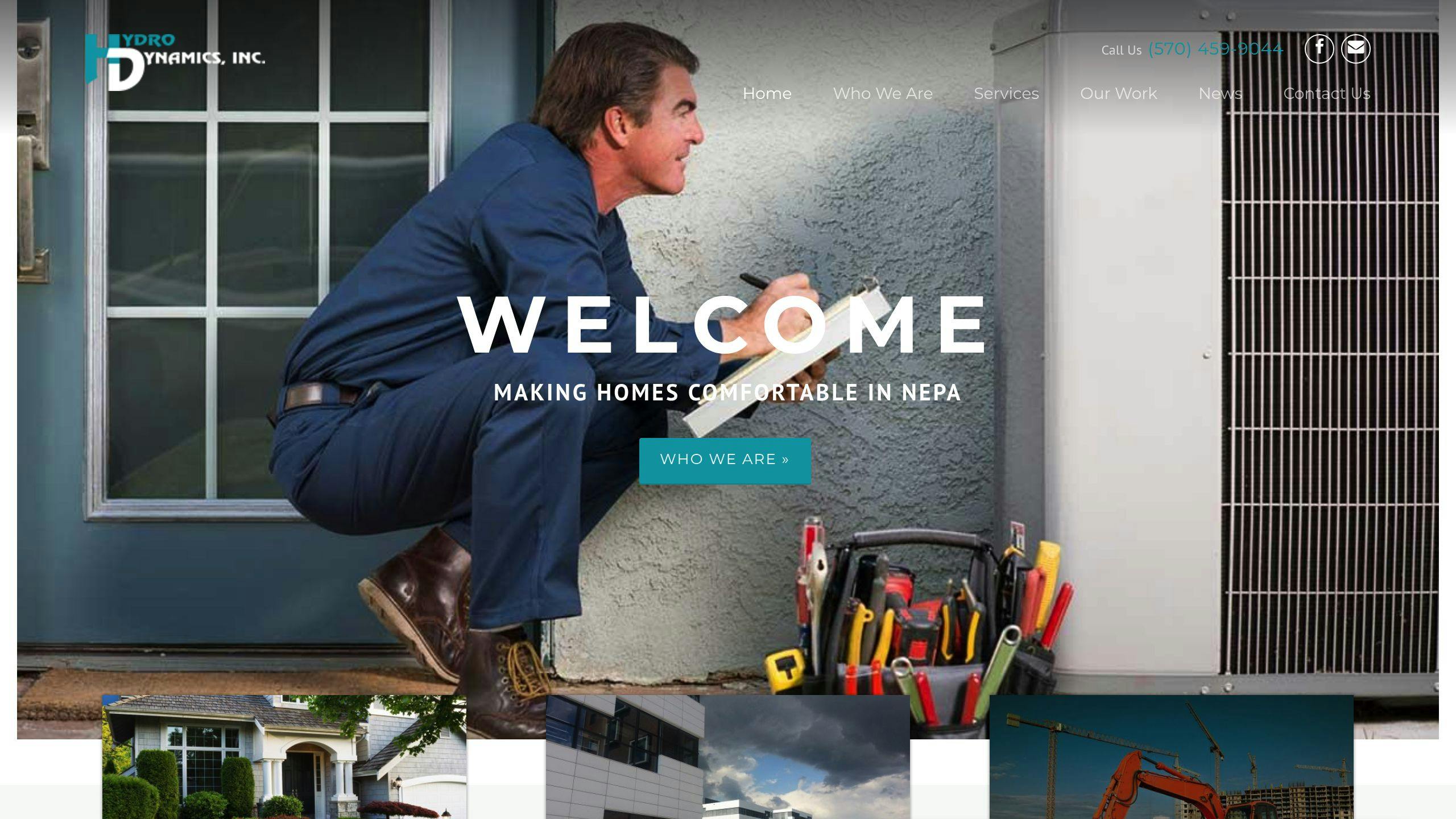Seasonal Plumbing Inspection Checklist
Avoid costly plumbing repairs with regular inspections. Seasonal changes can stress your plumbing system, but a simple checklist can help you stay ahead of issues. Here’s a quick breakdown of what to focus on each season:
- Spring: Check for frozen pipe damage, sump pump failures, and outdoor faucet leaks.
- Summer: Inspect sprinkler systems, AC condensate lines, and washing machine hoses.
- Fall: Insulate pipes, winterize outdoor plumbing, and prepare your water heater.
- Winter: Prevent frozen pipes, test your main water valve, and monitor for freezing signs.
Monthly Tip: Check under sinks for leaks, test water pressure, and schedule professional inspections for peace of mind.
ESSENTIAL Home Maintenance Checklist
Spring Inspection Tasks
After winter, it’s smart to check your plumbing to avoid springtime headaches.
Outdoor Faucet Check
Take a close look at outdoor faucets and hose bibs for any signs of winter damage. Look for cracks, leaks near the handles, and make sure the water flows strongly and evenly.
If the water pressure seems weak or the spray pattern is off, it might be time to call a professional to check for hidden damage.
Sump Pump Testing
Once you’ve checked the outdoor fixtures, turn your attention indoors to the sump pump. Here’s how to make sure it’s in good shape:
- Visual Check
Look for debris or damage in the pump and sump pit. Make sure the float switch moves easily. - Test It Out
Pour water into the sump pit and see if the pump kicks on and drains the water automatically. - Inspect the Discharge Line
Ensure the pipe is free from cracks and directs water safely away from your home’s foundation.
If everything works as it should, you’re ready to move on to inspecting your pipes for any winter-related issues.
Post-Winter Pipe Inspection
Cold weather can cause hidden damage to pipes that only shows up as temperatures warm. Inspect for cracks, bulges, or leaks, and keep an eye out for wet spots or discoloration around:
- Exposed pipes
- Pipe joints
- Plumbing installations
Pay extra attention to pipes in unheated areas like crawl spaces, basements, and exterior walls. Even minor leaks can waste water and lead to costly structural damage.
Summer Inspection Tasks
Summer often puts additional pressure on plumbing systems, making regular maintenance a smart move to avoid surprises. Start by focusing on parts that are more likely to wear out, like washer hoses.
Washer Hose Inspection
Take a close look at your washing machine hoses for signs of wear, such as bulges, cracks, rust, or kinks. It’s a good idea to inspect these hoses every three months. If you’re using rubber hoses, plan to replace them every 3–5 years to reduce the risk of leaks.
Fall Inspection Tasks
Get your plumbing ready for winter to avoid frozen pipes and expensive repairs.
How to Insulate Pipes
Start by locating exposed pipes in unheated areas such as basements, crawl spaces, and exterior walls. Protect them using foam pipe sleeves or heat tape. Here’s what to do:
- Measure the pipe diameter to ensure the insulation fits properly.
- Secure foam sleeves with zip ties every 1–2 feet.
- Pay extra attention to pipes near exterior walls.
- Seal any gaps around pipes with expanding foam to block cold air.
After insulating the pipes, move on to preparing outdoor water sources for the colder months.
Storing Outdoor Hoses
Take these steps to winterize your outdoor plumbing:
- Disconnect garden hoses from outdoor faucets.
- Lay the hoses flat to drain all water.
- Store coiled hoses in a climate-controlled area to prevent cracking.
- Add insulated covers to outdoor faucets.
- Shut off and drain outdoor water supply lines if possible.
Adjusting Your Water Heater
Fall is a great time to prepare your water heater for colder weather. The Department of Energy advises setting your water heater to 120°F (49°C). This temperature is warm enough for daily needs, helps prevent burns, and lowers energy bills.
Key maintenance tasks include:
- Draining 1–2 gallons of water from the tank to clear out sediment.
- Testing the pressure relief valve for proper function.
- Inspecting the anode rod for signs of corrosion.
- Adding insulation to the unit if it’s in an unheated space.
If you have a tankless water heater, schedule a professional inspection to ensure it’s ready for winter. Reach out to Hydrodynamics for a thorough checkup and adjustments before temperatures drop.
Winter Inspection Tasks
Winter puts extra stress on your plumbing system, but regular checks can help you avoid expensive problems.
Main Water Valve Check
Knowing where your main water shut-off valve is located is essential during winter emergencies. You’ll usually find it in the basement, crawl space, or an outdoor underground box near the street. Here’s how to check it:
- Locate the shut-off valves (both inside and outside, if applicable).
- Turn the handle clockwise until it stops to shut off the water.
- Test by opening a faucet – if no water flows, the valve is working.
- Turn the valve counterclockwise to restore water flow.
If the valve feels stuck or shows signs of rust, it’s time to call a professional for a replacement.
Cold Weather Drip Guide
Letting a faucet drip during extreme cold can help prevent pipes from freezing. While you’re at it, inspect exposed pipes for any early signs of freezing.
Frozen Pipe Prevention
Keep an eye out for warning signs like reduced water flow or frost forming on visible pipes. If you suspect a pipe is freezing – like noticing a significant drop in flow – don’t wait. Call a professional immediately to avoid further damage. For a thorough winter inspection and tailored advice, reach out to Hydrodynamics.
Monthly Maintenance Tasks
Monthly checks help address small plumbing issues before they turn into bigger problems. These tasks work hand-in-hand with seasonal inspections to keep your system in good shape.
Under-Sink Inspection
Take a close look under your sinks each month:
- Check pipe joints and supply lines for any signs of moisture.
- Look for water stains or warping on nearby surfaces.
- Run water to ensure drain connections are secure.
- Inspect supply hoses for corrosion or cracks.
Pay special attention to areas near garbage disposals and where pipes enter walls. If you notice dampness or strange odors, it’s time to call a plumber.
Water Pressure Test
Use a water pressure gauge on an outdoor faucet to measure your home’s water pressure. It should typically fall between 40–80 PSI. If it’s too high or too low, reach out to a professional plumber for adjustments.
Professional Inspection Guide
While monthly DIY checks are helpful, professional inspections dig deeper into your plumbing system. These inspections are a great way to catch hidden issues and ensure everything is running smoothly.
Hydrodynamics Inc., a trusted name in plumbing since 1994, offers detailed evaluations to keep your system in top condition.
“We are dedicated to provide prompt repairs, expert installation services, and satisfaction to our valued customers.” – Hydrodynamics Inc. [1]
Keep an eye out for ongoing problems like frequent clogs or unusual noises, and don’t hesitate to schedule a professional inspection when necessary.
Summary
Keeping up with plumbing maintenance throughout the year can save you from expensive repairs and potential water damage. A seasonal checklist ensures your plumbing stays in good shape, no matter the weather.
Here’s how each season plays a role:
- Spring: Focus on recovering from winter’s impact and preventing flooding.
- Summer: Pay attention to outdoor systems and make sure cooling systems are running smoothly.
- Fall: Get your plumbing ready for colder temperatures.
- Winter: Protect pipes from freezing and maintain a comfortable indoor environment.
These tasks help maintain your plumbing system for the long haul. Adding professional inspections to your routine can provide extra peace of mind. Companies like Hydrodynamics Inc. offer seasonal inspections, with certified technicians trained to spot and fix issues before they turn into costly problems [1].
Combining your own checks with expert maintenance is a smart way to protect your plumbing. Keep a record of all inspections and repairs – this helps you spot recurring issues and address them early.







